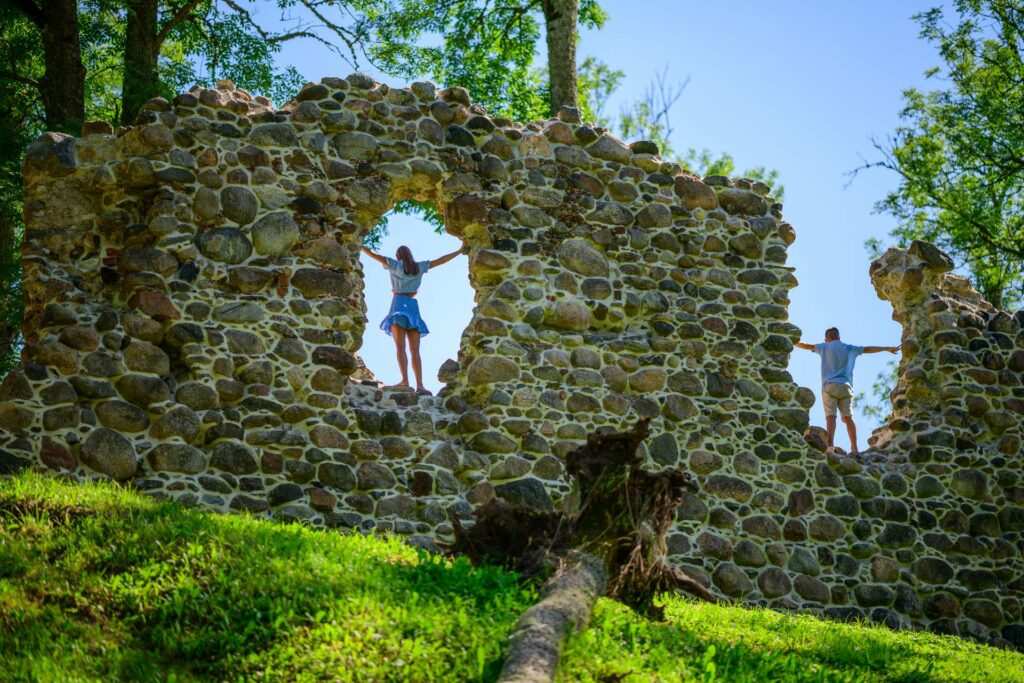
WHERE TO GO
Tõrva is a historical holiday resort that received the status of an official holiday resort from the Government of the Republic already in 1937. Inside the town of Tõrva, there are four lakes with beautiful beaches, and the best place to relax is by and inside those lakes. Tõrva is the largest city in the historical Mulgimaa.
General information about Tõrva
According to a folk story there once was a man called Tõnis who made tar („tõrv” in Estonian) from fir and pine stumps in the local woods and this is how the place got its name.
At Tõrva Central Square, the priority is given to pedestrian comfort and leisure facilities. Spread over almost 13,000 square meters, Tõrva Central Square has most of the space on the footpaths and activity grounds.
Landscaping was carried out on 5,000 square metres and almost 2,000 trees and shrubs were planted.
The central square of Tõrva runs from the historic tavern building to the Tõrva Architects Mari Rass, Ott Alver, Alvin Järving, and Illimar Klammer.
Tõrva Central Square runs from the historic tavern to the town hall.


Barclay de Tolly Mausoleum
Field Marshal de Tolly, whose final resting place is in Estonia, is one of the most famous people related to Estonia and probably the greatest Russian military leader. The Russian commander who came from a Baltic aristocratic family with Scottish roots played an important part in the Napoleonic wars between 1812 and 1814.
Barclay de Tolly’s name has been related to Jõgeveste since 1791 when he married Helene Auguste Eleanore von Smitten and became the owner of the Jõgeveste manor.
Wednesday–sunday: 10:00 – 17:00
Monday–tuesday: closed
Tõrva’s hiking trail
Tõrva’s hiking trail is 11.1 km long. The trail passes through beautiful areas with diverse
nature. It can be accessed from the park at Tõrva Secondary School and passes many
sights: Keisripalu forest, the Slave Stone, Helme cemetery, Tikste primeval valley along with Tikste and Pokardi reservoirs and Tikste stream, from whose banks a sandstone outcrop and the Eye Spring can be viewed.
The trail also passes through an arboretum and across Tantsumägi (Dancing Hill). Next to the trail are Lake Riiska, Lake Vanamõisa and the Õhne River. Throughout the year, the trail hosts many exercise and recreational sports events: Tantsumäe hill run, winter and summer cross-country races for mountain bikes, Tõrva triathlon and Tõrva Three Lakes
Race.
Landscape-wise the town forms part of the south-eastern section of the Sakala Uplands, which feature all of southern Estonia’s landscape types. The area is undulating, with kames and terminal moraines. The elevation within the borders of the town ranges from 43-73 metres.


Tõrva discgolf park
Tõrva discgolfi park has 18 baskets.
The course runs mainly on forest trails, but there are also baskets on clearings.
The course starts next to the Tõrva Upper Secondary School. You can leave your car for free to the parking lot of Tõrva Upper Secondary School.
Helme Parish Museum
Helme Parish Museum is located in the village of Kirikuküla in the former rectory of Helme church.
At Helme Parish Museum, you will not only see preserved items, but also conserved memories where each item can tell a story about its maker, user or owner. The multitudinous museum assets emphasise local values, sources of sustenance and way of life. Here, various eras converge, creating a long life line between yesterday, today and tomorrow.
Contact: koduloomuuseum@torva.ee, +372 566 25102


Helme caves
Located in the manor park of the same name, the Helme caves, are an unrivalled sight in Estonia.
Situated to the north of castle ruins, the caves have a white Burtniek layer of sandstone walls standing 3 m high. Unfortunately for cave lovers though, some of the better known caves have already collapsed.
Once comprised of seven interlinked chambers, the biggest of which was known as the Church of Moses. Peppered with springs, the caves have a long history; and over the years they have been dug out and used as shelters when needed.
Did you know?
In ancient times the Helme caves were also known locally as the gateway to Hell.
Kivialune (under the rocks) was a shelter for Old Estonians during the wars.
Ruins of Helme Order Castle
The ruins of Helme Order Castle are situated on a steep slope by the Pärnu-Valga road. The castle is thought to have been built in the first half of the 14th century. Parts of its walls with their distinctive window openings remain standing today. Legend has it that a young virgin was entombed within its walls in order to further strengthen it – whether there is any truth to the story is up to visitors to decide! Over the centuries the castle has been governed by Germans, Russians, Lithuanians and finally Swedes – who destroyed it in 1658.
Did you know that in the valley below the castle is the Doctor’s Spring, whose waters are said to cure seven different ailments.


Exciting hikes with our nature guides
Loodusturism.ee organizes exciting hiking trips, which are appropriate for the older
and the younger. Snowshoe hikes through the swamps of Rubina and ice skating treks on the bogs of the Rubina swamp.
Contact: Imre Arro, +372 527 2701, info@loodusturism.ee

